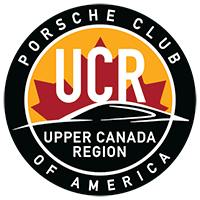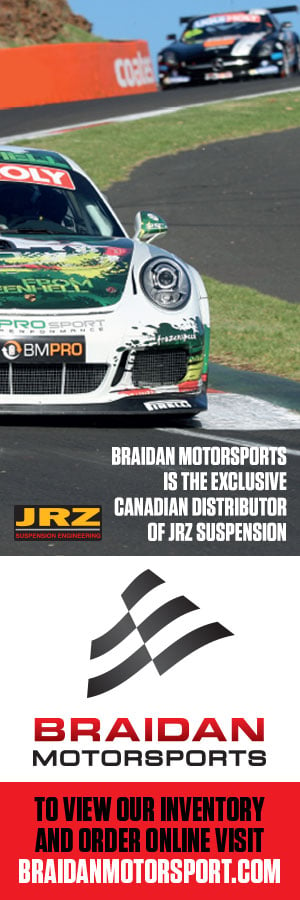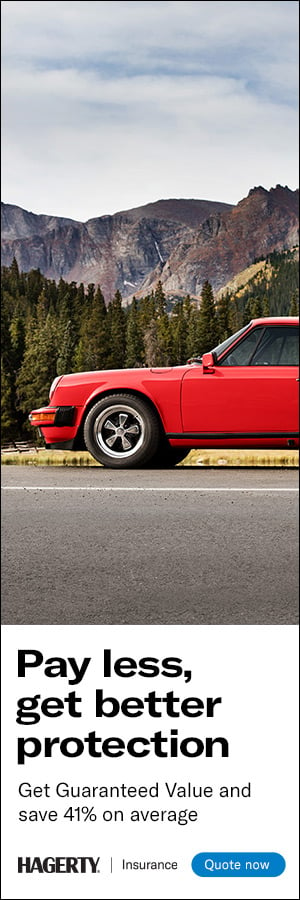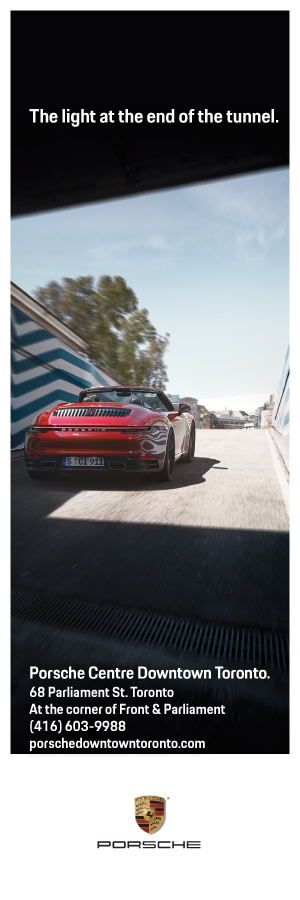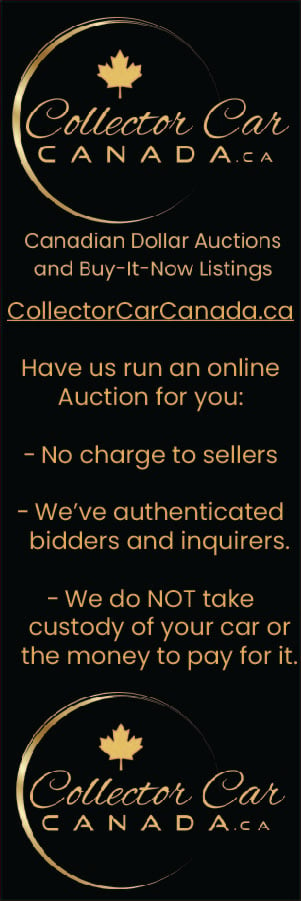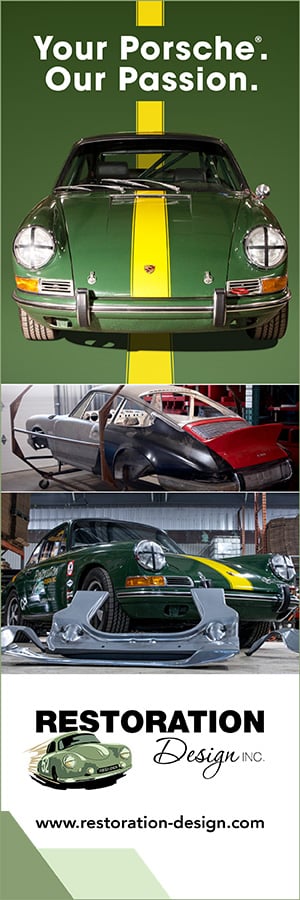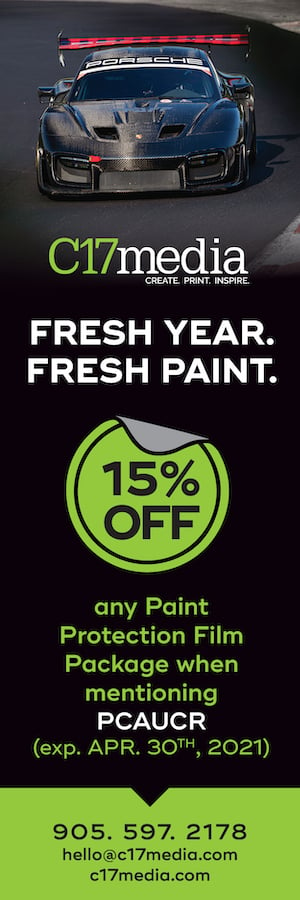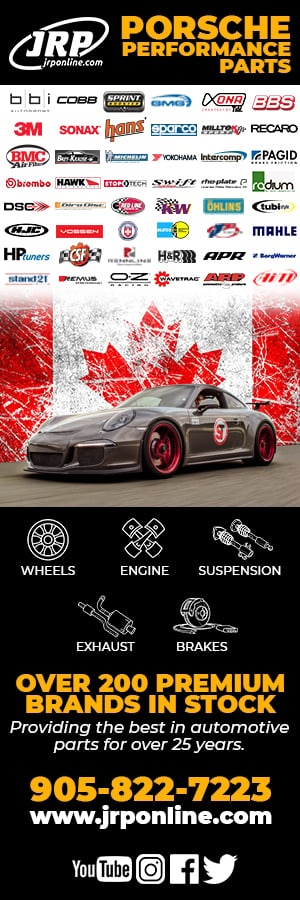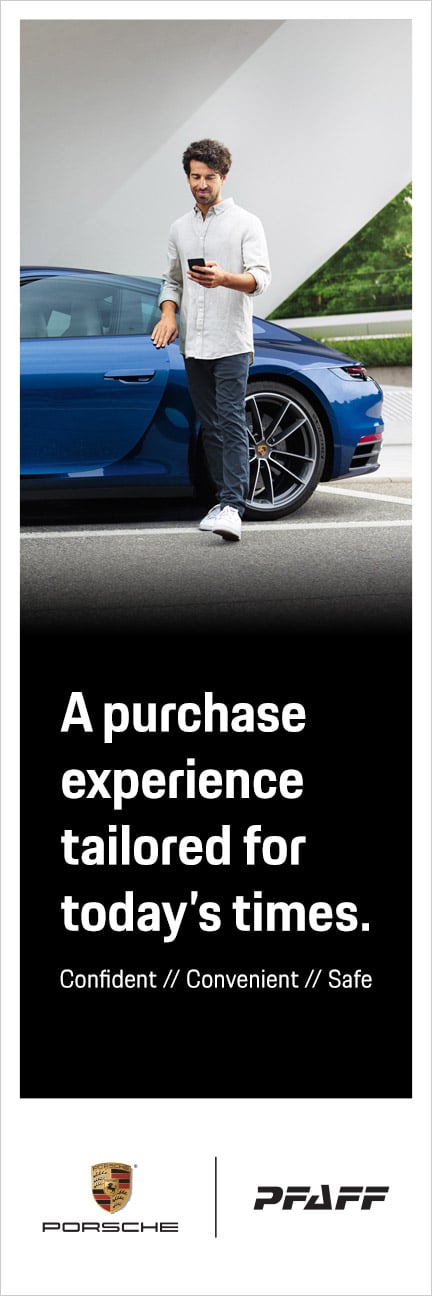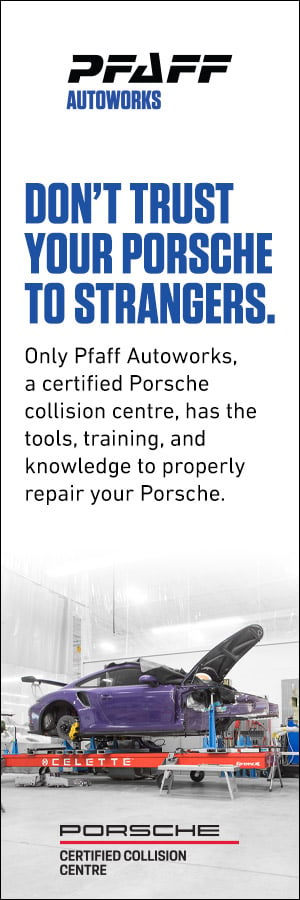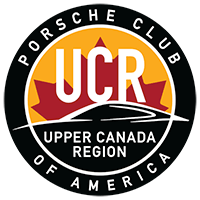This past May, my wife Carmelina and I had the privilege and pleasure of our second European Delivery Experience of a Macan. First off, what are the features of the Porsche European Delivery Program? These include:
- Delivery at your choice of either Leipzig or Stuttgart
- One night at a five-star hotel the night prior to delivery
- Pick up from the hotel to the factory
- Lunch at Porsche’s top-rated restaurant on the factory premises
- Factory tour
- Track session (on/off-road) if at Leipzig
- Personalized introduction and delivery of your card
- Up to 16 days of insurance included, with extensions available
- Shipment of your car to your local Canadian dealer after drop-off at selected sites
This is a wonderful program with a lot going for it. We were struck by the first-class treatment by the enthusiastic staff at Porsche. The factory tour gives an excellent opportunity to see behind the scenes and the logistics involved in bringing a car to your driveway. The chance to drive your car in Europe is an experience not to be missed, with the renowned Autobahn along with the not-to-be-missed secondary roads, most of which have a speed limit of 100 kph, often with an astounding number of curves thrown in, particularly in the south. An added bonus is not renting a car for your vacation.



There are some negatives that need to be mentioned. First is the need to pay in full, about one month before delivery. At this point, the European Value Added Tax, at 19%, needs to be paid, with a refund made after the car is delivered in Canada. However, there are limits of 6,000 km and 6-month limit, after which the car becomes used in the eyes of the EU and no refund on that VAT. This information is often buried in paperwork sent 1-2 months in advance. The confirmation of delivery date is issued only about two months in advance, which can affect things like booking Porsche Museum and Factory tours. This package also included suggestions of where to tour in Germany, but we already had our plans in place and reservations booked. In our experience, the car is typically made two months before delivery. Drop-off of the car for shipment to Canada can be a bittersweet experience when you realize it will probably be a couple of months before you see your car again, and you will never drive your car legally at the German Autobahn speeds again.
Our experience, in both cases started in September, with a May 17th delivery, seven years apart to the day. Since I didn’t want to be on track at Leipzig the day after arriving in Europe, we booked four nights in Munich before travelling to Leipzig. The first snag occurred when riding the train from the airport to downtown Munich, when I noticed a screen talking about a 50-hour railway strike. At the rail station, we confirmed this would interfere with our Munich to Leipzig trip the day before the scheduled delivery. This was a cause for intense concern since Porsche will not guarantee when you can take delivery if you miss the appointment, and all our travel arrangements had been made based on picking up the car. We rented a car for the day, at a stupid price, to ensure we were there for our experience. Porsche put us up at the Steigenberger Grandhotel Handelshof. This is a very large five-star hotel located in central Leipzig.
Porsche had a taxi pick us up at 11:30 the next morning to drive us to the factory, along with some other customers. There were five deliveries this year, with ours being the only Macan. The others were 911’s and a Cayman GT4. Last time there were two other couples taking delivery of Macans with us. Upon arrival we checked in at reception and met our Porsche host, who gave us an outline for our day, and then we were off to the top floor for lunch in their excellent restaurant. We noticed that everyone was more spaced out this time, which cut down on camaraderie. We assumed this was a fallout from Covid. After lunch, which they gave us ample time for, we had time to explore their mini-museum above the restaurant, including a display of significant vehicles, including the Carrera GT, produced at Leipzig.
At the appointed time, we met our tour guide for the factory tour. They now use radios to make it easier to communicate with the guests, making it easier on the guide’s voice. The tour was not as detailed as last time, with instructions to keep further away from the production lines, and the tour seemed a bit shorter. Part of this could be because they have moved Cayenne production out to make way for the electric Macan, which is already set up but not in the scope of our tour. Our guide also knew which cars we had purchased last time and took care to point out the options “under the skin” that we had ordered. With mainly 911 purchasers this time around that did not apply. Our tour guide did ask us to pass on to anyone thinking of European delivery to check the Leipzig box since they have the test track there.
After the factory tour, it was time for the test track, under the guidance of a Porsche driver. You do not drive your own vehicle, but one similar. This, at least for Macan buyers, usually turns out to be a higher-spec model of what you have bought. In our case, a Macan GTS vs. the base model. This has pros and cons, with more speed but less of a sense of what your own vehicle can do. The track can be configured in multiple ways, with inner and outer portions available. Since they were filming some track activity that day, from the trunk of a Boxster on the outer track, we got the inner track. This includes a replica of the Corkscrew and the Carousel, along with a large skid pad and some straights.
My goal was to not be passed by 911’s and GT4’s on track, which I was successful in doing. DE experience was a definite help here, and noticed by the instructor, while the others taking delivery had not had track experience. After a few laps, Carmelina, riding in the back seat, was feeling the motion and heat in the car as we were out on the track driving spiritedly without taking time to optimize the AC on a warm day. Evidently this is not uncommon for backseat drivers in a car being driven with spirit. She asked us to stop, and I took the opportunity to take a Cayman S out for a few laps.
After the track, it was time to go off roading in a Macan. This is an impressive part of the delivery, with the vehicle able to climb impressive hills, creep down them with Hill Descent, go sideways across a hill at a ridiculous angle, and then go for a carwash running through a pool.
Finally, time to meet the new car. Last time, there were three cars in a room, now it is individual delivery bays. You walk in and the car is covered, which they pull off doing a nice reveal, followed by photo ops. This seems similar to how the dealers are now doing new car deliveries. The track instructor then answers any questions and demonstrates features you may not be aware of. It turns out that having owned a ’17 Macan, and having had a few as loaners, we didn’t spend enough time reviewing the details. This became evident when it was time to go. The driver pulls the car out front, you can load your luggage and head out. I had brought a Garmin GPS from Canada for navigation since the car comes loaded with North American maps. Snag one was “Where do I plug it in?” since I could not find the cigarette lighter. It was after 4:30, most people had gone, and reception called somebody who wasn’t able to help. They speculate the cigarette lighter may be part of the smoker’s package, which we didn’t order.
We ended up navigating by Google Maps on a cell phone, with Carmelina interpreting. The next day I realized I could plug the Garmin GPS into the power outlet in the trunk and sit it in the back seat. This was better than being without it, since it dings on speed changes and photo radar traps, but it gives directions that are improved by a visual glance at the screen, not possible from the front seat as it slid around in the back. After a few days of trying to find an adapter and discovering that all the USB plugs in the car are now USB-C, I contacted fellow UCR member Sylvie Neill, owner of a 2022 Macan S, who was able to tell me where the plug is – under the rubber flap at the bottom of the sunglass holder – and were able to get the GPS working, much to Carmelina’s relief. BTW, when the car first messaged us “Low on Fuel – Please Refuel” along with “Would you like to navigate to the nearest service station” I of course said yes. It came up with a list of stations in Newfoundland, some 4K+ kilometers, never mind an ocean, away. As I said, North American maps.
One of my goals on a European delivery is to drive the car to enjoy it on European roads. I can park in a city anywhere! I searched out UNESCO World Heritage sites as a starter to determine what I might want to see and where to go, and we ended up with an itinerary wandering around Germany before heading into Austria, down to Italy and back to Germany. Since was driving a car, and parking is not always available, hotel or nearby parking was a criterion in where we stayed, I did not want to risk overnight street parking. The first day we kept short in anticipation of a late departure from the factory, about 1 ½ hours heading west to Quedlinburg, a town on the UNESCO site for the abundance of half-timber buildings. Dinner that night was in an open-air restaurant, open-air since the roof had burned down a few years ago. From there, we wandered westward, finding wonderfully twisty roads on the way, stopping briefly in Cologne to see the cathedral, which is a must-see site, despite the traffic, and on to Aachen where we stayed the night and visited the Cathedral, which was consecrated in 805 and served as the site for coronation of German kings for almost 600 years. This cathedral is small very ornate with lots of gold leaf and stunning stained glass windows, and laid out in an octagon vs. the more customary layout of Cologne.
It was time to head south, along the Rhine. Unfortunately, the GPS was not fully supporting us yet due to sitting in the back seat, which led to some missed turns. The drive along the Rhine (again, a UNESCO site) is quite interesting, with a lot of shipping traffic and small towns. We stopped for the night in Mainz, a small town dating to the turn of the first millennia. We had hoped to visit the Guttenberg Museum, where they have a couple of copies of the first Guttenberg Bibles on display, but the timing did not work out for us. Instead, we continued south, stopping in Speyer to see the cathedral there. Another UNESCO site, this one was started in 1030, and first completed in 1106, it was one of the largest buildings of its time, just slightly smaller than Cologne, and all for a town of 500 inhabitants. Of the three cathedrals visited, this is by far the most plain, but it is considered a turning point in European architecture.
We planned to visit Stuttgart on two days, but on our previous tour we had fallen in love with Rothenberg au du Tauber, a wonderful medieval walled town on a hill. This was about an hour and a half from the factory, so two days of commuting and enjoying great German roads seemed like a good idea. The first day, a Monday, we had booked a Taycan factory tour. We left in what we felt was plenty of time, only to arrive in Stuttgart, pull off the highway, and run into one of the worst traffic experiences we have ever had. An hour to travel 0.8 km, often sitting in place through multiple lights at the traffic circle visible ahead, arriving at the Porsche Museum Parking 15 minutes before our tour, only to find it closed on Mondays. We searched for other parking lots, believing the lies about parking spaces available according to the overhead signs, only to find they were for Porsche employees only. Finally, fed up with the traffic, we headed back avoiding the road by the factory. That night I wrote an e-mail to Porsche, expressing our frustration with the situation.
The next day we headed out, allowing even more time to arrive for our Porsche Museum tour. Traffic once off the highway was heavy but nowhere near as bad as the day before. Just before arriving at the museum parking, we received a call from a representative at Porsche explaining that the Hungarian elections were on, and the consulate was just behind the factory, causing all the traffic chaos. She suggested checking in with guest services when we arrived to see if anything could be done. When we arrived at guest services and vented, they sympathized, saying the traffic had caused just about everyone to miss the tours the day before. It turns out that the museum parking is open on Mondays for those on factory tours, if you press the intercom button. The hostess said she had complained repeatedly that this was not indicated on any signs, or instructions, and the powers that be had said it would be fixed at upcoming renovations of the parking lot. They told us we could get on a tour of the 911/718 factory “right now” if we wanted, just hand over our camera and cell phones and run over to the group, or take a tour of the Taycan factory in the afternoon. We opted for the 911/718 factory tour and did run to catch up. This tour did not include the engine facility, which I had seen in 2016, but was interesting. The striking thing on both tours was how hands-on most of the production is, while the material handling system is highly automated, allowing every car coming down the line to be different, with barcode verification of everything at every step. Again, radios allowed the guide to better communicate with guests. She gave a good tour but struggled with some words. It turned out it was her first ever English tour, having worked only in German before. We told her she did well and gave some suggestions on vocabulary. It turns out some of the tour group were active PCA members, and we compared notes on PCA activities while we were walking on the tour. A bonus when we got back to guest services to collect our camera and cell phones, as well as paying was a discount on the tour for our troubles the previous day.
To go on the factory tour we had to give up on the guided museum tour, but were able to do the self-guided tour, which is what we preferred, being able to go at our own pace. The Porsche Museum uses electronic devices, which you can key in the exhibit number and get an oral background on what you are looking at. A great advantage is the ability to skip around crowds and circle back to exhibits without missing anything. As always, the museum seemed to be in change mode as they change exhibits and focus.
Leaving Rothenburg ob du Tauber we made our way to Vienna via Bamberg with an overnight in Regensburg, which also dates back to Roman times. There is a bridge there, across the Danube, originally built about 800 years ago, and beside it is a small restaurant that claims to be the oldest continuously operating restaurant in the world. We had a light dinner there of soup and sausages. Driving into Austria, we were surprised by how much of a non-event crossing borders is, almost missing the sign at the border. We stopped at the first gas station to purchase our highway toll pass required on the highways in Austria. It mounted in the windshield and was good for a week. Carmelina was amazed at how many speed cameras there were once we crossed the border, commenting the Austrians wanted to slow the Germans down to a reasonable 120-130 kmph.
Vienna is a must-see city, where we spent three days, unfortunately not driving. Like most of the cities we visited, it was very walkable and had good public transit. From Vienna, we drove to Innsbruck via Hallstatt (another UNESCO site), a picturesque town on a mountain lake in southern Austria. Hallstatt dates back to Roman times and is known for the scenery and was originally settled for the salt mines. Unfortunately, we had not considered this was a gorgeous Sunday, with lots of locals out enjoying he scenery and taking all the parking. Since the trip, I have read the locals are complaining about the amount of tourism, sometimes over 30,000 people a day to a town of under 1,000. If we were to go again, we would arrange to stay overnight, with parking, as we could not find a place to park driving through the town. After that it was secondary roads, winding and climbing north-west until we picked up the Autobahn into Germany before heading south again. We found Innsbruck very photogenic, nestled in the mountains.
From Innsbruck we dropped south down to Bologna in Italy to visit family. This drive through the Dolomite mountains is breathtaking. It is very different from the Rockies, with much more civilization, and not as rugged. In Bologna, we parted ways, with Carmelina staying on in Italy for three more weeks while I headed back to Leipzig to return the car and then head home. The car could have been returned elsewhere, but it was cheaper to do it at the factory, and the delivery time would probably be reduced since Porsche would route the car through the factory anyway. I had hoped to do the Stelvio pass on my way back, but it was only half open, with that being the first day. If you want to do it, plan for mid-June through September. I did manage to squeeze in the Audi museum while en route though. On the drive, I enjoyed some higher-speed runs on the Autobahn, now having broken the car in. The car cruised comfortably between 150 and 180, and I maxed out at over 200 several times, backing off due to traffic. My experience with the UCR Driver’s Ed program really showed up here, with a much higher confidence level than the last tour.
One advantage we had this time around was knowing what to expect. On our first visit, we were disappointed with the food, and probably overate at breakfast at the hotels. They do put on amazing spreads for breakfast, but usually at a cost of about $20 Cdn. each. I had talked to fellow club member Matthew Held, who suggested cafes or highway stops would be cheaper, especially if all we were looking for was a pastry and coffee. We found this very helpful and added bakeries to the list. My criteria tended to be did they have a real espresso machine, and not a push button it does-it-all machine. As a result, we found great coffee with a pastry, running $12-13 for both of us vs. $36-40 at the hotels.
Similarly, on our first trip we ate a lot of schnitzel and French fries. While we enjoy this occasionally, it is not something we want as a steady diet. I did some research on typical German foods, and had a list of foods to try along with a short German-English summary of foods, along with some simple vocabulary on my phone. First off, German breads are amazing! We managed to sample Frischer Spargel (white asparagus, the Germans are crazy about this in the spring) & lachsfilet, Schweinshaxe (pork knuckles, go to a popular place when they are busy so it is fresh), Wurstl Kartoffelsalat, Krustchen vom Sauerbraten, Leberknodel, Schwabenpfanderl (beef and roasted onions), Butterkase (butter cheese), Käsespätzle (a type of egg noodle), and type of pancake for dinner one night. We also had some schnitzel, but enjoyed the breadth of food. Most of our evening meals were at beer gardens or pubs, while lunch was at cafes or bakeries. In Innsbruck we tried Jausenteller, Tyrolean sampler platter.
The other thing I did for this trip was to learn a smidgeon of German, using DuoLingo for about three months before the trip. This was a great help in greeting people, understanding how polite Germans are, and ordering food and tickets off the beaten path. Most of our encounters could be done in English, as long as discussions were kept on the topic, be it the hotel room and service or the food at a restaurant. Venture off the beaten path and trying to discuss a broader range of topics in a small town would invite some blank stares. As with most things in life, preparation helps for a successful trip! </>














































